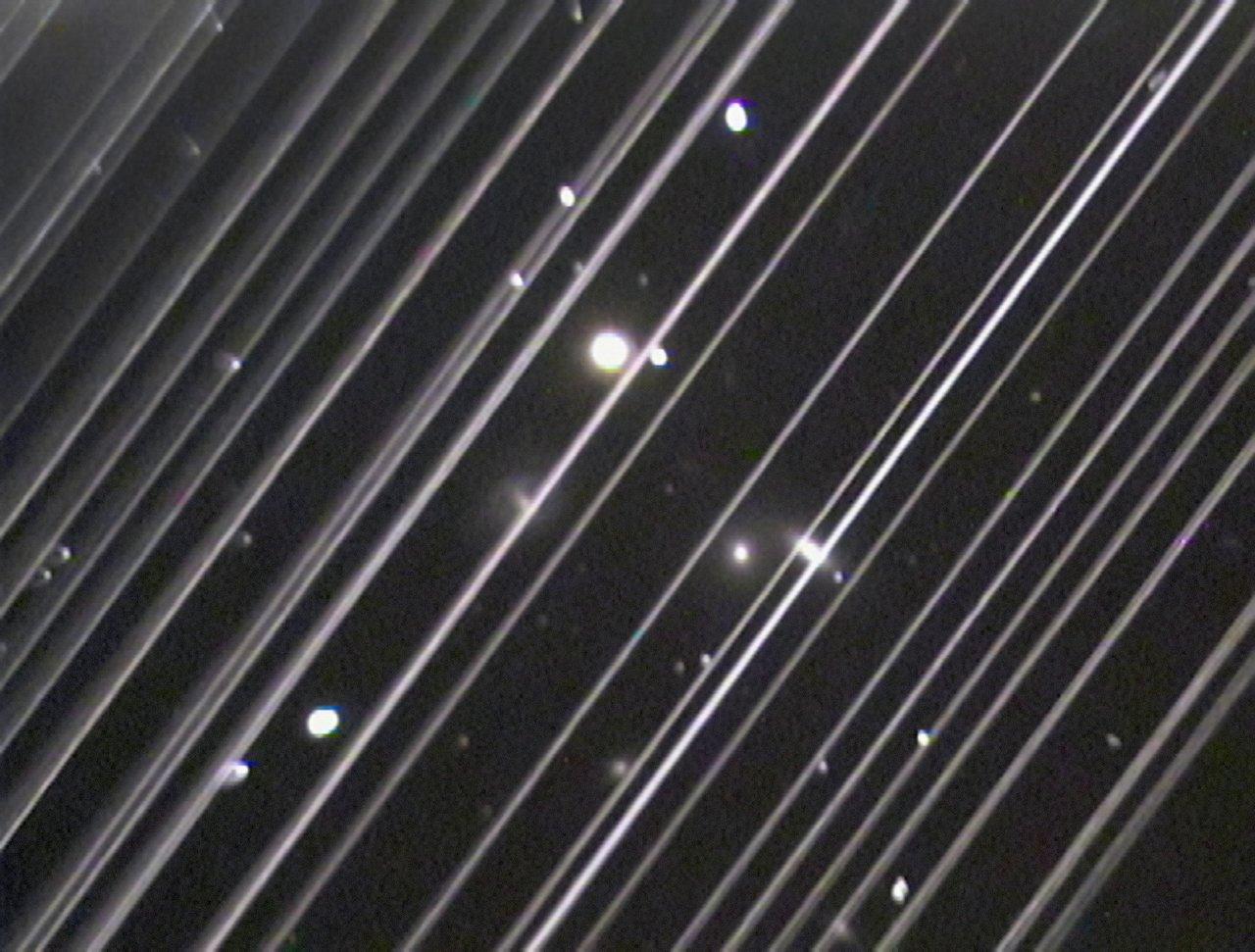
SpaceX’s Starlink satellites are leaving 35 times more traces in astronomers photographs over two years, a new study has found.
It is also believed that, by the time Starlink has been completed, every image will have one track – a white line - across it.
Using archival images from 2019 until 2021 from a survey telescope at the Palomar Observatory, astronomers took data about all the orbits of SpaceX’s Starlink crafts and compared it to images taken from the Zwicky Transient Facility (ZTF). The ZTF is designed to pick up rare events, so repeatedly scans the sky to compare for objects that suddenly appear.
Once the image was found to contain a satellite, it was then told to detect whether there was a bright line across it. While there were only 100 Starlink satellites in orbit, a track would only be found once every ten days.

However, when Starlink quickly grew to over 1,500 satellites in orbit, the ZTF would commonly find over 200 tracks in the same timeframe, Ars Technica reports.
SpaceX is aware of these issues. In 2020, hundreds of astronomers warned that satellite constellations could prove “extremely impactful” to astronomy and scientific progress, and that “Starlink alone may roughly double the number of space-based moving objects detectable by the unaided eye around twilight.”
SpaceX has deployed a variety of tactics to reduce the visibility of its satellite network, including painting them black and twisting the position of their solar panels to make them less reflective.
The researchers in this new study found that the visors did have an effect – dropping their brightness significantly – but they were unfortunately still higher than the targets set.
It is estimated that while there is only a 0.04 percent chance that a rare event may not be spotted because of Starlink satellites, the issue could get significantly worse as more companies such as OneWeb or Amazon Kuiper launch competing networks.
SpaceX already has approval to launch over 10,000, at which point every image at twilight will likely contain a Starlink track. Twilight observations are usually made when searching for objects, such as comets and asteroids, within our solar system. At 40,000 satellites, all twilight images are likely to have four tracks. SpaceX did not respond to a request from The Independent before time of publication.







